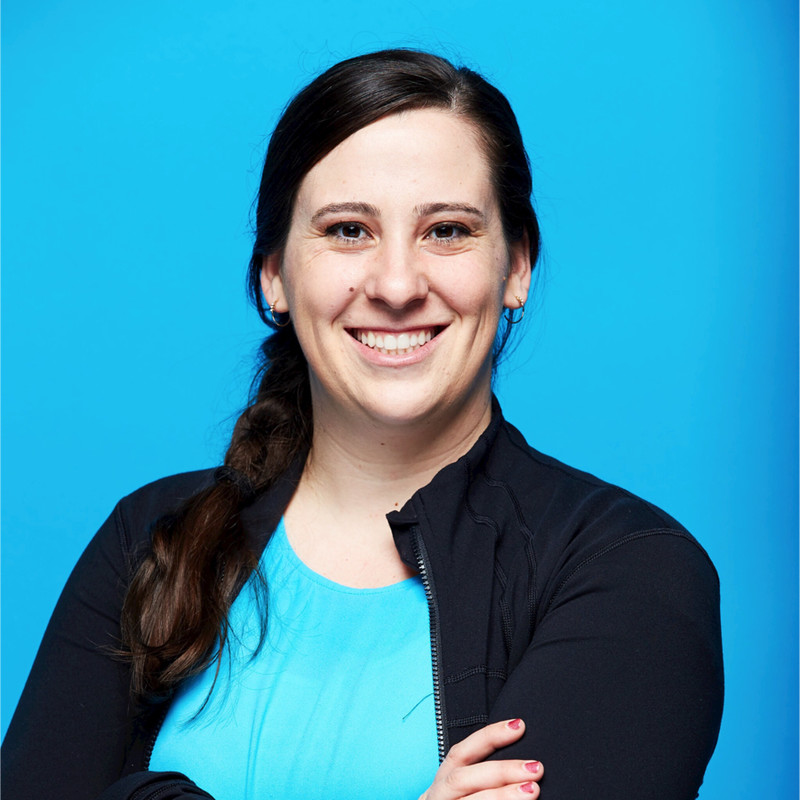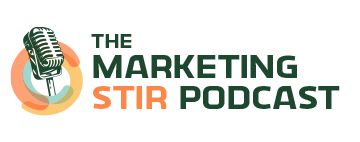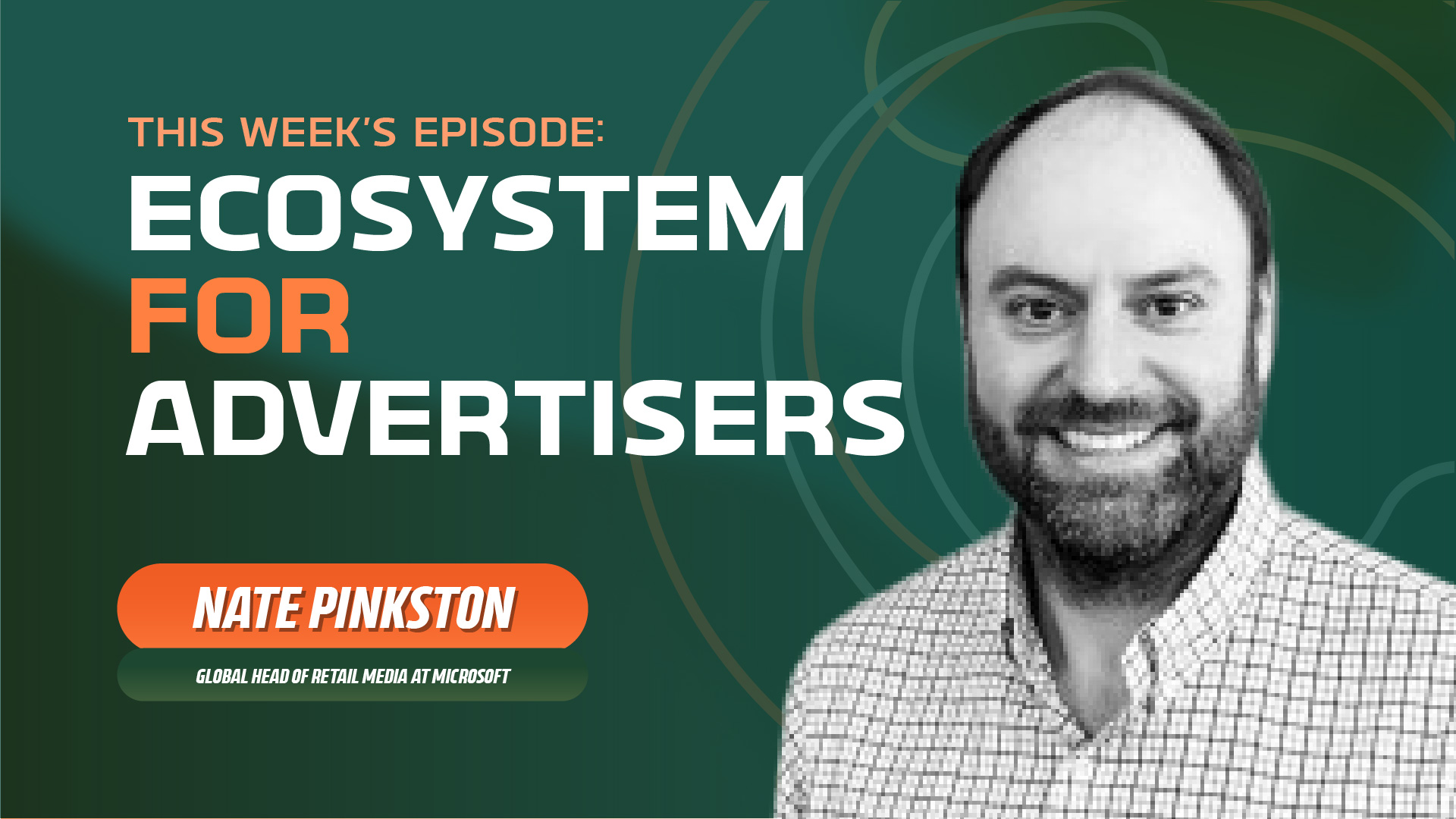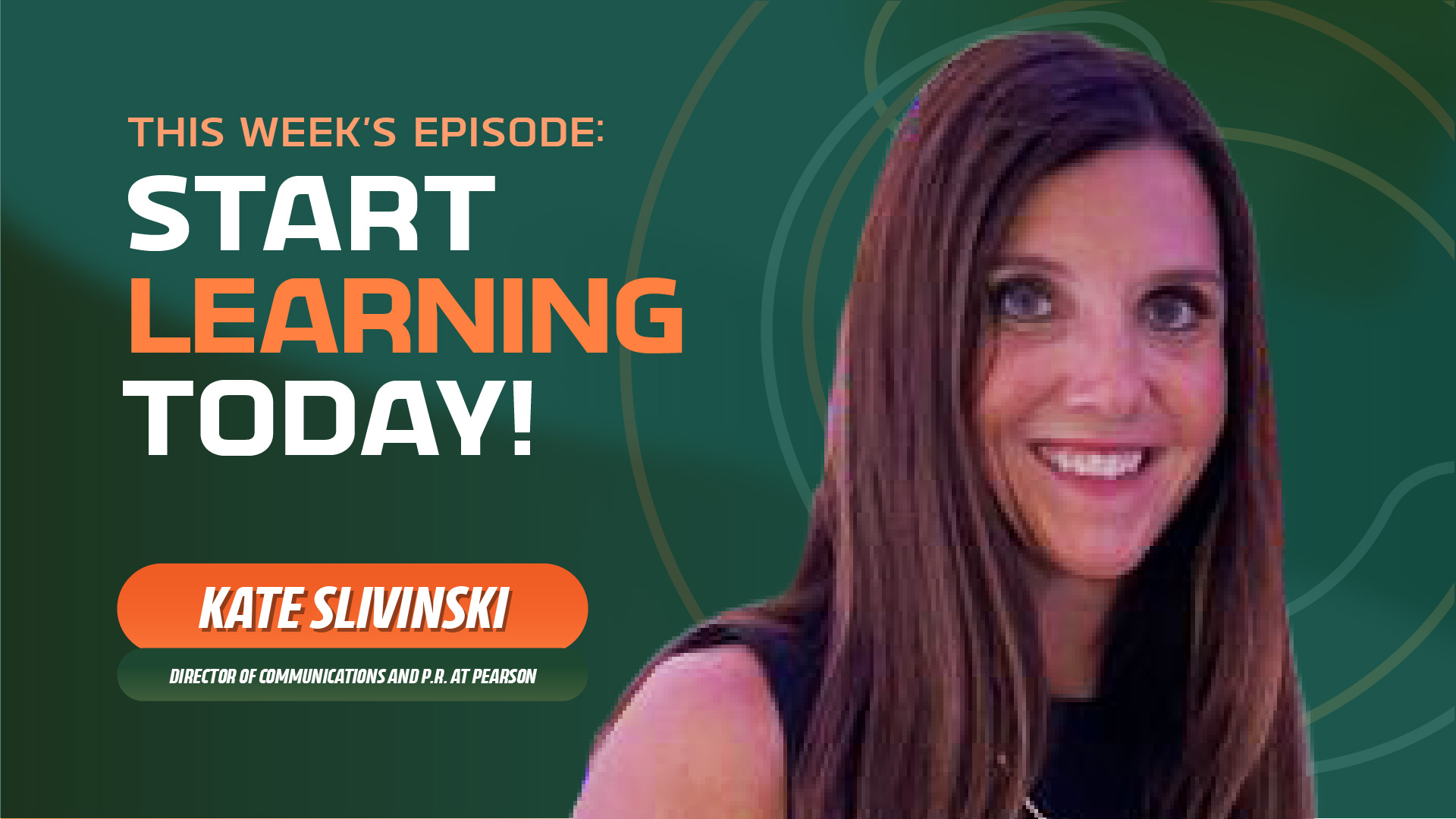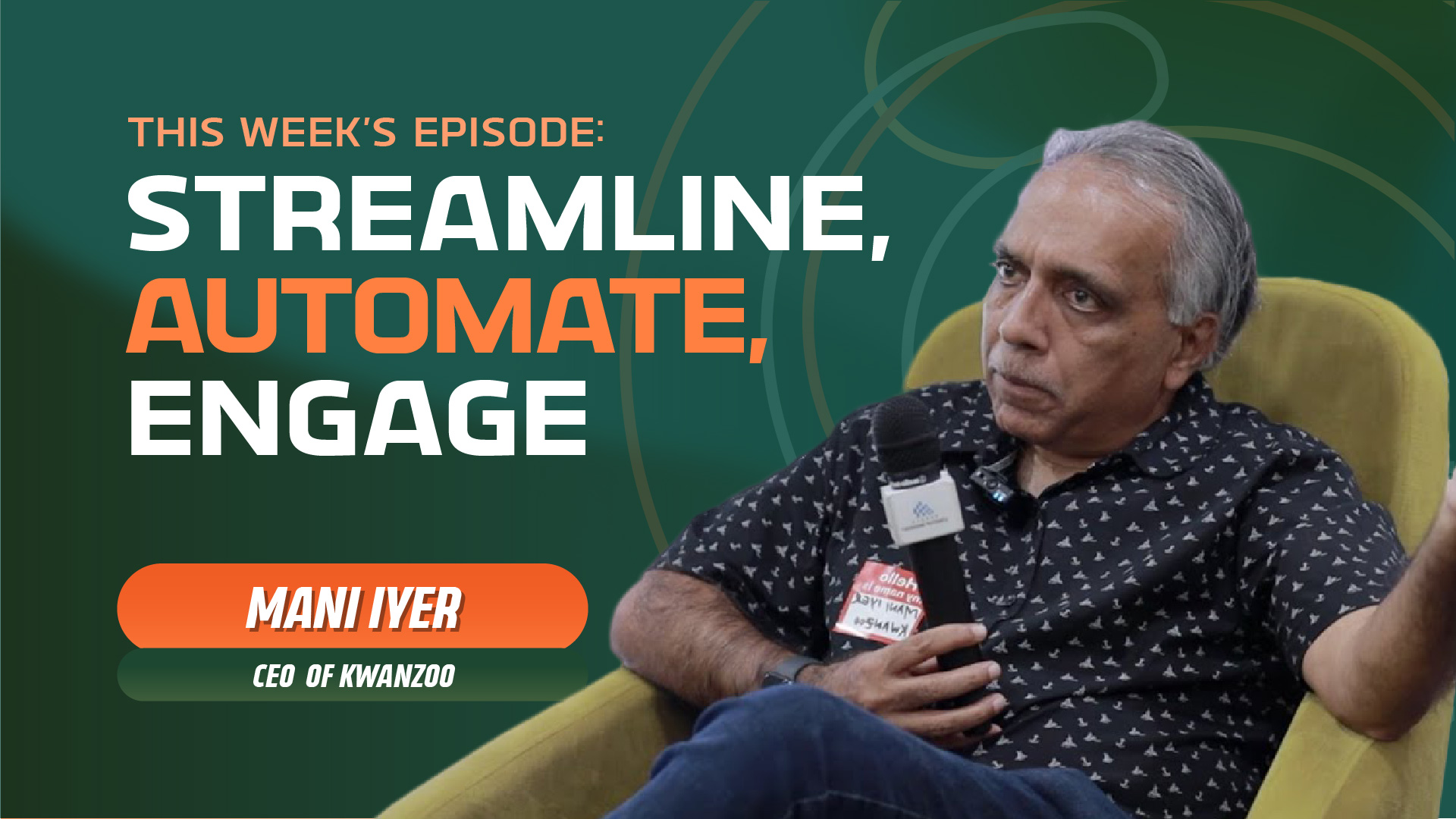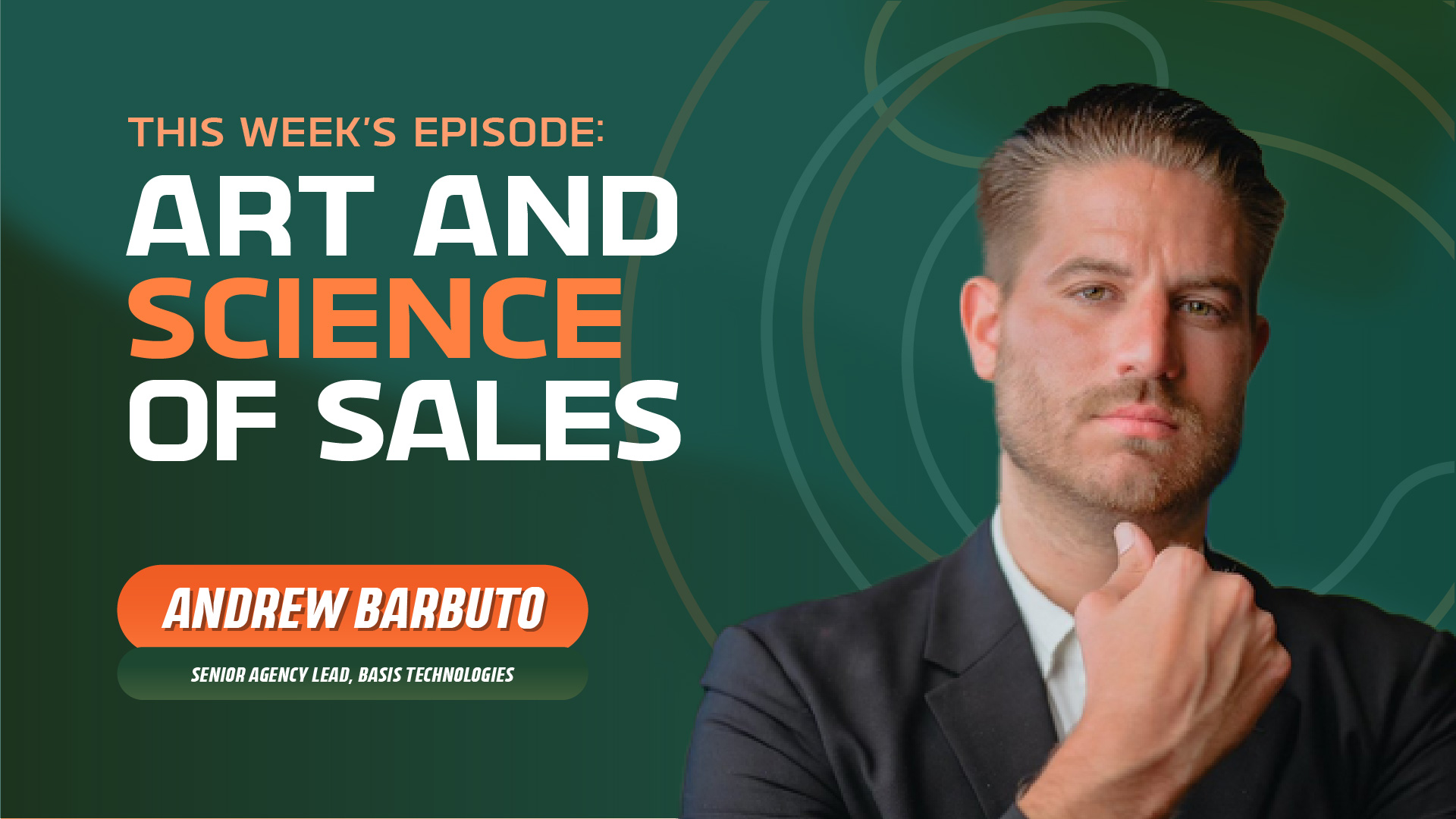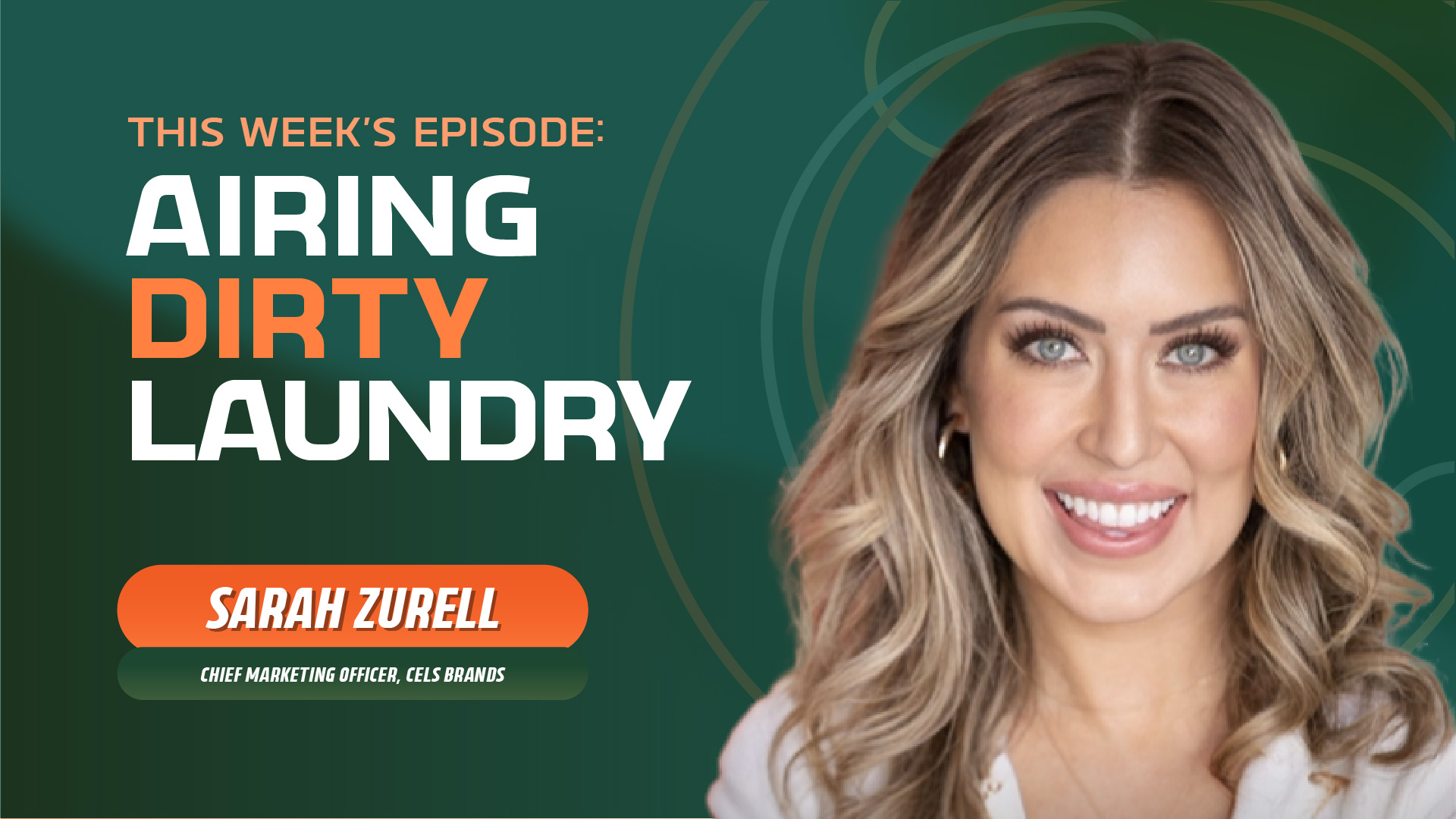Hillary Carpio (Snowflake) - The Unicorn Hunter
- 0.5
- 1
- 1.25
- 1.5
- 1.75
- 2
Vin: Welcome to The Marketing Stir Podcast, probably the most entertaining marketing podcast you're going to put in your ear. I'm Vin, the associate producer here at Stirista. The goal of this podcast is to chat with industry leaders and get their take on the current challenges of the market, and we'll have a little fun along the way. In today's episode, Vincent and Ajay chat with Hillary Carpio, Director of Account- Based Marketing at Snowflake. She talks about how teams are highly integrated and work across multiple channels and strategies allowing for more precise targeting. Ajay's envious of Vincent's new mic, and Vincent is excited that New York is back. Give it a listen.
Vincent Pietrafesa.: Ladies and gentlemen, welcome to another episode of Stirista's The Marketing Stir. I, of course, am your happy host, Vincent Pietrafesa, the vice- president of B2B products and promote... I was going to say promotions... partnerships. I don't even know what I do here anymore, ladies and gentlemen. I just make things happen apparently. I don't know. But partnerships. Let's pause for station identification. That's not a real thing, this isn't a station. But I always like to talk about Stirista just to let you know who we are. We are a marketing technology company. We own our own business-to- business data, business- to- consumer data. We help companies out there target that data to help them get new customers, enhance your current customer database if it's missing some holes, need to fill in those gaps. It's garbage. We are here to help. We own our own DSP as well called AdStir. We can help you with OTT. We could help you with display, connect the TV. Email me, vincent @ stirista. com. That is how confident I am that we could help. I also like that people are taking the liberty to just email me random things which have nothing to do with Stirista or the podcast. But hey, at least people are listening. And also, thank you for those suggestions. Thank you for telling us that you were loving the guests, that you're loving what Ajay and I are doing. And also, that you're loving the book selections, like the people who talk about what books they're reading, we get a lot of feedback about that. They're like," Thank you for recommending that." Wow. Who knew people read? I sure don't. Ladies and gentlemen, it's great to have my co- host with me, my CEO. Ladies and gentlemen, the San Antonio Slayer as we call him, Mr. Ajay Gupta. What's up, Ajay?
Ajay Gupta: Hey, Vincent. Your microphone has given me a little bit of envy, so I might look for a new one now.
Vincent Pietrafesa.: Yeah, I have a great microphone. Our guest, you'll see it in a moment, has a great microphone. I think you need to up your game, Ajay. But for me, I need to be loud, even louder than I normally am. You have a smooth, soothing tone that works for you, and as our CEO. So, maybe look into one or not. You sound great, man.
Ajay Gupta: Oh, thanks. Yes, I think some people are more naturally gifted at podcasts.
Vincent Pietrafesa.: And others need all the accessories. I have four lights on me right now. I have a makeup artist that I randomly pay to come in. I don't do that, that would be ridiculous. No one watches us really on YouTube. You listen to our voices while you're working out or while you're doing some work. That's what people say. And thank you again for coming up to me at these conferences now and saying," Hey, man, I love your podcast. Boy, is Ajay naturally funny." I'm like," Wait a minute, that's not his role. It's not supposed to be his role." But I know you love hearing that. Look at the smile on his face, ladies and gentlemen, that he gets. But it's good to see it. It's great that you're coming up to New York. Maybe by the time this airs, you might have already been here. So, wow. We had some fun, got a lot of great work done. I don't know. Who knows? But we're looking forward to having you in New York City office.
Ajay Gupta: Yeah, I got to book my trip. I got to look up all my rooftop bars. It's been so long, but looking forward to it.
Vincent Pietrafesa.: Absolutely. New York City's back. New York City's back. I was just telling our guest, we got to get her up to here to New York to hang out and have some fun with us here at Stirista. But yes, the rooftops are opening up. The bars are back, comedy clubs, Broadway clubs... Come to New York City. I don't work for the tourists board, but just come to New York City. It's great to have you. I'm one of those new Yorkers that love to see tourists. A lot of them may get mad, maybe they're a little slow. You know what? Relax. Come on, we had a tough couple of years. Let's enjoy ourselves. But speaking of the last couple of years, Ajay, there's been a company that you can't escape. You hear a lot about this amazing organization. It's been longer than that, but I feel like in two years I've been really hearing a lot about this organization. Snowflake, that's the organization. Heard of them? Yes, you have. If you haven't, you're about to hear about it now, because we've got a great guest with us. We've got a great guest who is unique in so many different ways, but I also feel like there's those few guests that you might hear me say... Not all of them. I love all my guests... but there are those guests that I talk about. And I say," I felt like I've known this person. Instant friends." She's really knowledgeable. I really want to get her perspective. We're looking forward to sharing that. The Director of Account- Based Marketing of Snowflake, ladies and gentlemen, Hillary Carpio. What's going on, Hillary?
Hillary Carpio: Hey, thanks for having me. Excited to be here.
Vincent Pietrafesa.: Happy to have you. I was putting words in your mouth. I was saying," We're instant friends." I don't know if that's true. But hey, in my head, we are.
Hillary Carpio: Hey, I agree. I agree, BFFs right off the bat.
Vincent Pietrafesa.: I love it. I love it. Hillary, I'm so glad that you joined us on this podcast. You hear about Snowflake a lot, which is great. I've been seeing you a lot on LinkedIn. You have very funny posts, by the way. I love the post that you put out there. Follow Hillary out there, we'll give some information later maybe, if you want. Don't bombard her on LinkedIn with a lot of messages. Leave her alone. But just try to follow Snowflake at least. But Hillary, I see you all over. You're doing some great things, speaking engagements, love the post. But I want to get it right out there, I love your title. We'll get to that in a moment. But for those of the listeners that don't know Snowflake, talk to us about what Snowflake does. And then again, your title. I'm very familiar with account- based marketing because I'm on the B2B side, but I love that it's right in a title. It's like, pow, right there. So talk to us about your role within Snowflake. And for the people out there listening, what Snowflake does?
Hillary Carpio: Snowflake was originally known for building data warehousing directly in the cloud, so no on- prem. But now we're known for the entire data cloud. So we serve multiple different workloads, multiple different use cases, and really can empower organizations to use their data in many different ways and very quickly. And we also have what we call our data marketplace, where we're able to share and consume data across consumers and providers. That's really interesting as well. I sit as a director of account- based marketing, like you mentioned. It's a title that seems to be on the rise, but really means something different at each organization. So nobody I talk to at any other organization really has quite the same role or does it in quite the same way. Many organizations' account- based marketing is really a targeted demand gen function, which is all grand and glorious. There's absolutely no issues with that. But I actually sit alongside our demand gen organization. So I roll up into the VP of marketing, and he oversees demand gen, ABM, field marketing, marketing intelligence, SDRs, and marketing operations. So we're one cohesive demand gen team. So while the broader demand gen organization does very targeted account- based marketing in their own fashion to named accounts, we touch about 30% of the named accounts. And those are entirely driven by sales. So sales chooses who we go after, when we go after them, but with the help of our intelligence that we provide them. So different data all across the spectrum from first party, third party, firmographic, technographic, you name it, we use that to help sales choose our target account list. And then we do very boutique campaigns, about 2, 000 in any given quarter. inaudible campaigns. And we have 18 individuals on the team today that are working alongside sales, similar to a field marketing fashion where we're being responsive," not reactive", to sales to meet their needs. That's really where we sit and what our value is in the organization.
Vincent Pietrafesa.: I love that. And I love the... You said the word demand generation. We've been hearing that a lot out there, just podcast guests. Demand generation, building that top of the funnel awareness of Snowflake, putting out content to introduce people, get some hand raisers to say," You know what? I'd love to learn more about Snowflake." Is that how you're seeing it as well?
Hillary Carpio: Yeah, we actually are full funnel demand gen. So we are top of funnel, generating awareness, generating interest. And then we actually continue to support sales post- sale into consumption, or some consumption- based company, so that once a contract is signed, customers have to continue to consume down their contract in order for us to make revenue. And then we also help with land and expand. So once we're in an existing customer, we have an entire team dedicated to helping very large companies with multiple subsidiaries continue to expand in those different subsidiaries in the lines of businesses to introduce new workloads and new use cases of different ways to use Snowflake with their data.
Vincent Pietrafesa.: I love it. And Hillary, we always love to ask this question, how you got into marketing? And in your case, I'd love to understand how you got into marketing? Because, again, it's not really sometimes always the direct path. And I'd also love to ask why B2B? What about B2B really interests you?
Hillary Carpio: Yeah, none of this was my plan. I take pride in being a planner and really having my stuff together, early in high school, preparing for college. And in college, preparing for grad school. And grad school, preparing for my career, and always being one step ahead. But I really wanted to be in advertising. So I actually started my career in graphic design because I wanted to be the one actually making the billboards specifically out of home, and then experiential opportunities to where you could really immerse somebody in an experience and in a brand that made them a feeling or an emotion. And so that's what really struck me, I liked the psychological aspect of advertising. I, very quickly early in my education, realized that sitting on a computer, taking the feedback on designs wasn't really where I wanted to be. I wanted to be on the strategic side. And so I wanted to hire a graphic designer to bring my vision to life as opposed to doing the design myself. So I actually pursued a education in advertising. And you can go get a marketing degree just about anywhere. Advertising degrees are a lot harder to come by, especially in a full school that's not dedicated to the arts. So I ended up going to San Diego State, they have one of the top ad programs there, where I was able to pair it with a minor in psychology. So really understanding how to bring the ad world to life, the ad research, how to do focus groups, how to really think about messaging and content, pair that with an integrated campaign of the delivery and different channels, and then how to connect it with the psychological aspect. So I could do the experiential campaigns that I'd always wanted to. So I then paired that with my post- grad education in mass comm and new media, where I actually learned the skills to bring it to life. So I coded an app, I filmed a video, I edited the different components, did Photoshop, built an entire integrated campaign there. And then knew that networking was key to my ability to get a job. I moved to the Bay area. I didn't know anybody. I found a roommate on Craigslist and we moved in together. We both moved in from out of town. And I'd built my network from scratch. So I followed up with every guest speaker that came to my grad school classes and offered to get coffee, connected about what they had going on, learned from them. And one of them actually owned an agency, consulting agency. So I ended up getting a job through her and her consulting agency at NetApp right out of my post- grad, and started there. So I ended up in B2B somewhat by accident, started in public sector. And I live in the Silicon Valley, it's the world of B2B. So I had originally wanted to be in B2C, was offered 27K at a firm in San Francisco to do some ad work there. And was like," Yeah, that's not going to cut it. Not going to cut it."
Vincent Pietrafesa.: Yeah, that's not going to get you an apartment in San Francisco.
Hillary Carpio: Not going to happen. So, I fell into B2B, but I've grown to love it. And I've grown to love really marketing to the IT individuals who are very different in how you speak to them and work with them than your traditional B2C.
Ajay Gupta: We have a lot of people that listen to our podcast are actually students, and we do a lot of events around college students. So, I'd love to know what's some of the advice that you have for people pursuing a degree in marketing or advertising?
Hillary Carpio: Yeah. My advice is to find what you're passionate about and do more of it. And it's what I talk to my team about all the time is that life is really hard when you're forcing yourself to do something that you're not interested in. And it's difficult to really push yourself to the front of the innovation curve. But if you narrow in on the thing that you really find interesting... And again, for me, it was that psychology aspect of marketing, right? So I had the courage to say," I'm not going to go after a marketing degree. I'm going to after an advertising degree because that's what I really enjoy." I think we need to do more of that in our education and in colleges, is find what really sparks joy for you and keep pursuing it. And be willing to adapt and to change as you learn different things you didn't know existed. I'm doing my dream job, but I didn't know this was a job to be my dream job. It's my dream job because I'm constantly innovating, creating, and leading. Those are the things that I was passionate about. So the title, the team, the company, those things can all change. But if your core values are being met, then you're going to be continuously challenged and wanting to grow.
Ajay Gupta: Hillary, coming back to your current role, what's some of the channels and strategies that are working for you?
Hillary Carpio: We're completely integrated, so we work across multiple channels and strategies. We are highly integrated with our sales development team. So those are the individuals who are responsible for calling and connecting with new business and passing those meetings onto the sales org. That's a really strong strategy for us. We work very closely with them and see about 3X to 4X the efficiency metrics when they're going after accounts that we're going after together compared to when they go to market without us. We also really rely a lot on LinkedIn. LinkedIn has some of the best database out in the market because people want their contact information updated on LinkedIn, whereas they don't want it updated in a lot of the other databases that are just used for cold calling basically. So when we use LinkedIn, we can target by title, function, role, company, interest, skillset, pages they follow, you name it, we can target. That allows us to get really relevant messaging to the right people at the right time. That's a great strategy for us as well. And then I also love to pair that with a bit of direct mail to cut through the clutter, take the digital experience into the physical experience, and get something that'll really resonate and add value to the individual so they remember our brand and know how to follow up.
Vincent Pietrafesa.: Hillary, let's go back to college for a second. Who wouldn't want to go back to college? Let's take us back to the college day, something that you mentioned there... You studied marketing and advertising, especially. And I heard you say, and I read somewhere, getting through banner blindness. I love that term. Talk to us about that.
Hillary Carpio: Yeah. So for my grad work, part of what I studied was banner blindness. And that's where our brains have these schema that we create in order to protect ourselves from persuasion that could be harmful. So this all happens at a subconscious level that when we see so many advertisements and banners, was what this specific study I'm referencing was about, you see them over, and over, and over again. We actually don't even see them. We don't notice them because our brain is strategically and automatically filtering them out of our view to keep us from being persuaded. As marketers... And what I really think my job is in an account- based marketing or ABM... is how to cut through that banner blindness. And you do that by really adding value and building trust. To lower those guards down in your brain, you have to show that you're not a threat, you're not a harm. And that's like your instinctual, primal response, not necessarily something that's new, that's to protect yourself. So what our team is really good at and what I really pride ourselves on is we use data. And we're a very data- driven organization, especially working at Snowflake. We use data to understand what you might care about. And then we message to you based off of what you care about. That helps lower that barrier where you're blocking everything out and go," Oh, I actually need to do that." Or," That's something I'm struggling with." Now, we're solving a problem instead of pushing a product. And When you solve somebody's problem, then you have a spot on their calendar. They're trying to solve this problem. Anyway, you become an asset to them instead of an annoyance. And so it's really nice to connect that kind of banner blindness thought process or idea of how it works to how we do things differently at Snowflake on my team, because it's really all connected. But it's really treating humans like humans. That's the net of it, treat a human like a human and add value, or stay out of their way.
Vincent Pietrafesa.: Yeah. And this is going to go right into the next question that I had. And I'm glad you brought it up because I wanted to get your take on, because of your experience in B2B marketing at well known companies, what areas do you feel that other companies are falling short in when they're doing B2B marketing? What's some advice there? Not some of the secret sauce, don't reveal all of that because that's yours. But just where do you think businesses fall short? Is it not treating people like humans at the end of the email or the marketing piece? Talk to me about that.
Hillary Carpio: I think there's two things. There's lack of cohesion across marketing teams. And that's even at a startup where you have only two or three and maybe even one individual doing marketing, really spreading your tactics out in a way I need to... I was talking to a startup the other day, because I do some coaching. And they were saying," I need to please my CEO because I need to fill the lead funnel. But also, I need to do this content piece and I need to focus on whatever. And I'm going to separate my time." My advice to them is the same to what you're asking, which is, how do you connect all those things together? Because if you're a marketer and you have a disconnected thought process or these disconnected priorities, it's going to feel disconnected to your recipient or your audience as well. So you want to stitch your different strategies together as one cohesive flow, and think about how you can reuse your different pieces of content, your different strategy, your different channels to make one story so it's one narrative that the consumer receives. That's the first thing I think people fall short on or struggle with. The second thing that I think people struggle with is the ability to execute. And I think that's where we really excel at Snowflake, and that's a strength of mine is to take strategy and turn it into action. To execute, you have to focus on the people in the process and think about technology second, whereas most people go straight to technology," Hey, I need to buy an ABM platform. I need to buy this platform. I need to buy this data set. I need to buy whatever." They get all of these things, but then they can't take it to market. They can't get it where they have the data that the SDRs are using, and sales team is using, and partner marketing is using, and sales enablement, everybody else on one page. Because when you are all on the same page, and you're all using it, and you know what each person is supposed to do, you can get this thing to market in a very cohesive way to then match the cohesive narrative that you've built. You've got to pair the strategic narrative with the strategic tactics in a way that you can actually do something with, as opposed to being a disconnected mess.
Ajay Gupta: Hillary, is there a campaign you're working on now that you're particularly excited about?
Hillary Carpio: Yeah, I'm really excited about coming back to real life events. So it's been several years, and it was great for the account- based marketing world to really be relied upon during this digital era where sales didn't have any other option, but to go digital. So as we're coming back into the market with actual events, we have our customer event coming up in June, and we're able to engage these top accounts. So, we have the number of accounts that sales has requested and we're getting them on- site. So now you have these people on- site, what are you going to do with them? You got them there, they're your top account. Let's do something to really engage them. So we're doing two different on- site activations. One's for our data marketplace, which is really connecting data consumers with data providers. So we're doing some really cool stuff around sustainability, connecting to our keynote speaker. And I'll... can't share a lot of details, but it'll be an opportunity to really immerse people and what it means to create a stable edge, which for us is somebody consuming data regularly from our marketplace. And then we're also engaging our top accounts in a way that... This is really cool. My team came to me and said," Hey, we want to engage our top accounts. We want to do X, Y, Z." And I said," Well, what are you trying to achieve?" And that's always my question," You're going to do a campaign, what are you trying to achieve?" They said," Well, we're trying to do this one thing. But what's actually happening is 80% of the account isn't responding. It's the same 20% of people always responding." So then we need to get the other 80% of people responding, not continue to engage the 20% we already have engaged. So on- site, we're going to get those 20% that are engaged. And we're going to do a refer- a- friend program. So once they're there, there's going to be an incentive for them to go back, get other people on their team engaged who are not already. And we'll give out... It's going to be really cool. I can't share details at the moment, but we're going to give something out to these individuals to get them into our database, to get them involved with Snowflake, and to get them hyped up about the Snowflake brand. So it's a great example of, one, how to engage people on- site. And two, how to solve the problem you actually have instead of a problem that doesn't exist. So think about what you're trying to achieve.
Ajay Gupta: Yeah, I managed to get myself invited to a fancy client event. We were not one of their top 25 clients, but because I was close enough, and they had a few cancellations, I managed to get in. That was pretty cool
Hillary Carpio: Nice.
Ajay Gupta: I like that.
Vincent Pietrafesa.: How do you know that? Did they tell you that? That's not great?
Ajay Gupta: No, no, because it was last minute.
Vincent Pietrafesa.: Oh.
Ajay Gupta: But I didn't mind it, it was like a$1, 200 resort room, so... Nice.
Hillary Carpio: Wow, that's fancy.
Ajay Gupta: Hillary, there's a lot of businesses that are failing in B2B marketing. What are some of the ways that you avoid doing that? And obviously, events are coming back, and all of that is great, but general tips on how to avoid failing in B2B?
Hillary Carpio: Yeah, you've got to know your audience. Who are you talking to? Do you not only know what they care about, but how your product solves their problem at the office, and how that translates to their personal life? So at Snowflake, we save people a lot of time in the way they do business. That doesn't just save them time at the office. That means that they're having dinner with their families. That means they're attending their kids' soccer game. That means that they can go do the hobby, or the exercise, or the activity they want to do. So we need to not only know our audience, but name them. Create a persona, put a stock image with it, know what their tenure is, know what their challenges are, know how much they make, know how much they would be bonused on, and what they would be making a bonus from. And then start gearing your B2B marketing to meeting those in intrinsic needs of that individual, so that you're really understanding who you're talking to. And that goes back to that banner blindness, when we are understood and being spoken to our needs, then we're going to pay more attention than being pushed to something that's not relevant. I get messages all the time trying to sell me something, and my automatic thing is a defense... Because I don't have time to take every single call. Sometimes people send me a video, they record it," Here's how I can help you. I already read your LinkedIn post, I know what you need. Boom, done. Yep, I get it. Let's talk." So we need to be like those people.
Vincent Pietrafesa.: Very interesting. I love that advice. Hillary, I didn't want to skip over something you mentioned. You talked about coaching and you talked about that... Is that to a specific group? Is that to people who reach out to you? Talk to me a little bit about that.
Hillary Carpio: Yeah. So I do coaching in different ways. First and foremost, my priority is my team. The individuals at any level on my team, but specifically we call them coaches instead of managers at Snowflake. I have three coaches that report into me. One for enterprise, one for our verticals team, and one for our data marketplace team. And they each have teams that report into them. Their career is my priority, to get them the soft skills, the hard skills, the strategic, the analytical, all of those components. I'm really passionate about building the future of leaders and creating leaders who are both empathetic and strong performing, and not just strong performing in jerks or very nice people who can't perform. That's first and foremost. I also mentor individuals from different routes, people refer to me, people who reach out on LinkedIn. We'll meet on Fridays every now and then just talk about what are your challenges? What are your priorities? How can we help each other? And so I just mentor for this pure nature of helping individuals. I also do accelerator coaching for startups. So different venture firms will bring me in to talk to their portfolio of normally seed or pre- seed companies, and CEOs, and founders who are trying to build out a B2B marketing engine. And it might make sense to take an account- based approach for an efficiency perspective, really putting your dollars into the accounts that are most valuable to you. And I also do some advising as well for other startups at different points in the journey related to marketing and unrelated to marketing. So I have my hand in a few different pots, but all connects back to what I've mentioned before, which is just being innovative, creating new things, and helping others.
Vincent Pietrafesa.: And speaking of others, I did see that you are also a huge advocate for female leadership in your field and in the industry. Can you talk to me about that as well?
Hillary Carpio: Yeah. I know there's a lot of people who have somebody they know who got them into the job they have, and that they can lean on, and help, and make a presentation for them, or whatever. I didn't have that. I have phenomenal parents who taught me how to fend for myself and really ask for help when I need it. And so that's how I've gotten to where I am and how I plan to continue to grow my career. So I think it's important to help other females and other emerging leaders in their career, in their perspective. And that can be anything from knowing how to use your voice in a room of men when you otherwise feel like you don't have a place, that can be how to break through that glass ceiling, how to ask for a raise, how to share your ideas when you're not really sure about them. There's a lot of different things. And then there's women too who are navigating what it looks like to start a family in the workplace, and how to navigate taking that time off versus feeling the need to work consistently. So there's just a lot of gender issues that continue to remain in our industry. And while we've made strides of progress, I want to be part of the solution and I want to be part of the voices who are supporting each other as we grow. So it's just an important thing to me to be the mentor that others were, and are, to me.
Ajay Gupta: Hillary, this is one of our staple questions here. A lot of people, I'm sure, reach out to you based on your title and where you work, on LinkedIn. What's a message that resonates with you and gets an answer? And what's one that really annoys you?
Hillary Carpio: The one that annoys me most is," I see we have some things in common. I'd love to add you to my network", which means as soon as I hit accept, you're going to try to sell me something that I don't want. And now I'm going to spend my time because I'm a nice person. And instead of ignoring you, I'm going to try to respond to you, and give you the time of day, and at least ask you to remove me from your list. So those drive me nuts because I feel like I'm playing a game of dodgeball," Do I accept? Do I not?", trying to run around. The ones that I love accepting are telling me why you're contacting me...." I saw your information and I'd love to hear more from you. I have a product I think would help you for X, Y, and Z." If you're trying to sell me something, just tell me you're trying to sell me something. Don't try to trick me. And that's kind of how I look at it. And then I mentioned a little bit earlier, videos, and I hesitate to say this... I thought about this before I came on," Should I not say this, so I don't get in infiltrated with videos coming in?" But I think videos can be really helpful because when you take a second to do a two- minute demo that I can watch when I have a second, then I don't have to book a time on your calendar. I can see if it's important or resonates with what I'm trying to do. And then it gives me the ability to forward it to somebody who it might be more relevant to. So I got one the other day, right? I watched a video, said," Hey, this actually fits under our brand organization. I forward it to our brand organization. I'll let you know if they want to demo." And then it eliminates that whole back and forth process. So that's been really helpful as a consumer to have that ability to take that asset and pass it along.
Ajay Gupta: The video is definitely a new answer, Hillary. We are 100 plus episodes in, and nobody had that answer.
Vincent Pietrafesa.: Yeah, I love it.
Hillary Carpio: Oh, interesting.
Vincent Pietrafesa.: That is a great idea.
Ajay Gupta: This is a question that, for some reason, Vincent usually asks, so I'll get to ask it for a change. But what's some of the professional books that you've been reading, any recommendations?
Hillary Carpio: Yeah, we actually have been doing... We call a leadership book club. So it's an opportunity for our sales development managers and managers on my team to come together and really become better leaders. And we've learned a ton through it. Our most recent book was Culture Code. And I learned so much from that book of the foundation of what it means to build a good culture, how to get people involved, et cetera. That's one that I highly recommend. And from that, I actually made it a personal goal of mine this quarter, which is to become a Jonathan. And Jonathan is somebody in the book who goes... Well, there's a experimenter who goes to these different teams, and basically takes all of the terrible tactics he can think of to reduce the function and the efficiency of the team. So he is critical of people. He interrupts people. He over speaks. He does all of these things that make people feel uncomfortable. And then through his data and experiments logs, how he basically screws up a team. There's this one team that he can't see him to screw up because this guy named Jonathan keeps leveling the playing field. Every time he does something nasty, Jonathan comes in and levels it back out. So he just can't mess up the team. So from that book, my goal has become to be a Jonathan. I have it written on my window over here that," To always create space at the table, and be that neutralizer where people have a voice." That's that book. I love it. And then I'm actually about to read, I think I'm five pages into Atomic Habits, which I'm excited about too. Love the psychology aspect of it and how to really build strong habits in the office and outside of the office for personal as well.
Vincent Pietrafesa.: I love that. Ajay, I don't know if you did the same thing that I did, but as Hillary's saying that, I'm trying to think in my head like," Who do I know who's a Jonathan? Who do I know that.. Who's the one who's interrupting? Who's that person." I like the... Jonathan's the level setter, right? That's kind of goes in.
Hillary Carpio: Yes.
Vincent Pietrafesa.: I love that. Were you thinking about that? That's the first thing that came to mind is like," Who at Stirista, or who do we know outside of Stirista is like that?"
Ajay Gupta: Yeah, I was trying to see if it's you.
Vincent Pietrafesa.: No, inaudible me. I'm the level setter. That's me. I'm the peacemaker.
Ajay Gupta: I'm kidding.
Hillary Carpio: That's why we're fast friends, we're both the peacemaker.
Vincent Pietrafesa.: Yeah, I'm the peacemaker. I don't interrupt people. I'm just like," Oh, hey, come on, let's do this. Let's take it easier." My degree is in mass media communications, interpersonal communications. I'm the diffuser. Plus, my improvisation background allows me to think on my feet. Look, see, here I'm-
Hillary Carpio: So, you're Jonathan. We're both inaudible Jonathans.
Vincent Pietrafesa.: I'm Jonathan. Yes, Jonathan is... That's not going to go by now, but-
Ajay Gupta: I think that'll be your name in Vegas next time we have a company retreat.
Vincent Pietrafesa.: Yep. That's me, Jonathan. I know, I look too much like a Vincent or Vinny though. I don't know if people... Right? I can't escape this Italian look. People are like," Jonathan? Yeah, right?" But so-
Hillary Carpio: Maybe Johnny.
Vincent Pietrafesa.: Johnny. I mean," Hey, Johnny, what are you doing over there?" I know. So Hillary, a couple more questions before we wrap here, I want to get your take on some advice or some habits that you have adopted that's kind of made you a game changer in this business. What makes a great leader? Just love to hear more about that.
Hillary Carpio: Yeah. I think about myself and what I look for in the people I hire... And I actually posted on LinkedIn this morning, really I am a unicorn hunter, right? I'm not looking for your average marketer. I'm looking for unicorns. I think an incessant curiosity and an incessant need to create are what have helped me or what make me, me. But then along those lines, that's not everybody right? And you don't have to have those things to be successful. You have to lean into the things that make you, you. Those are what make me, me. So lean into the things that make you, you. Embrace who you are. Don't try to be a different leader. Don't try to be another person on your team. Hire to your weaknesses so that you can round out your persona, and round out your experiences, and learn something from the people you work with as opposed to hiring people who are good at what you're good at. Otherwise, you get a team entirely built of people just like you. You want a team built of people who aren't just like you so that you can build diversity of thought and diversity of leadership within your organization. That's how I think of it when I'm building out a team and when I'm looking at my own personal growth.
Vincent Pietrafesa.: I love hearing that because I do think that our CEO here does that. Ajay, what you do well is, you find different personas, and you utilize their strengths, I think. You let me be me, which is great. A lot of people would just say," Hey, hey, be quiet, man. Just go in the back, your energy's too much." But you do. And you always find that, that's my compliment for you for the month here.
Ajay Gupta: I feel touched.
Hillary Carpio: You only get one a month? One compliment a month?
Vincent Pietrafesa.: Well, yeah. Yeah. How many do I get, do you think? Again, one a year. But yes, one a month I have.
Hillary Carpio: That's funny.
Ajay Gupta: Yeah. But otherwise, your head gets too big to get through the doors.
Vincent Pietrafesa.: See? See, what I'm saying, Hillary?
Hillary Carpio: Yeah.
Vincent Pietrafesa.: So also, I want to talk about... Let's get to know you on a personal level. So, where were you from before the San Diego and... Were you always in California?
Hillary Carpio: Yeah. So I grew up in the Assembly area, in a small little town called Sonora. We knew... You go to the grocery store, you run into your teacher, you run into your doctor, you run into everybody. So community is just core to who I am. It's core to my being to have that connection and that knowing of one another. So I grew up in Sonora. I went to San Diego State for my undergrad. And then moved to Bay area to start a career and do my grad school. That's really it. But yeah, I grew up on a farm of 128 acres, cows, horses, pigs.
Vincent Pietrafesa.: Oh, wow.
Hillary Carpio: Spent my time outside building things, creating things, jerry- rigging things. So, very different-
Vincent Pietrafesa.: Do you still get to do that? What are some of your hobbies now?
Hillary Carpio: Yeah, so that very much carries into my hobbies today. I spend my time... We bought a house in San Jose a couple of years ago. And anyone from here knows, you buy a million dollar shack as I call it. So I spent a lot of time, I've painted the exterior.
Vincent Pietrafesa.: Oh, wow.
Hillary Carpio: I've redone some of the interior, do a lot of DIY projects. And then really anything creative. A few weekends ago, I did a DIY jean jacket for a gal pal of mine... My friend's little three year old going to Disneyland, made her a custom Mini Mouse jacket.
Vincent Pietrafesa.: I love it.
Hillary Carpio: I make wedding invitations for my friends and family who are getting married.
Vincent Pietrafesa.: That's awesome.
Hillary Carpio: So, there's anything that really expresses creativity and kind of art outside of the workplace.
Vincent Pietrafesa.: I love that. I love that. Random sidebar conversation... I was talking to my wife the other day. I was like," There's two types of jackets that never go out of style, and one is the jean jacket and the other's the leather jacket." I feel like they never got out of style.
Hillary Carpio: But they change. They're like... The same jean jacket is not necessarily the same jean jacket that's in style. And the same leather jacket isn't the same cut, quality, size, style.
Vincent Pietrafesa.: Exactly. Yeah. Definitely different from the 1950s to today, but-
Hillary Carpio: Little fringe or not.
Vincent Pietrafesa.: Yeah. But I know, I live in Manhattan, so I see people pull it off either way.
Hillary Carpio: Yeah, totally.
Vincent Pietrafesa.: And I know all about that million dollar shack here in Manhattan. I think this office I'm in, it would rent out for like seven grand a month in New York City just for someone to live here.
Hillary Carpio: It's wild.
Vincent Pietrafesa.: It is wild. Hillary, final thoughts, closing thoughts, anything you'd want to share? This has been amazing. I would love to hear your final thoughts.
Hillary Carpio: Yeah, thank you for having me. I love the opportunity to talk about leadership and growth, and I appreciate the forum to do so. So thank you for having me. And if you are interested in seeing any of the different speaking engagements I do, or more information, I have a website, the hillarycarpio.com, where you can see an aggregate of those different forums and consume the content that I'm putting out. So follow me on LinkedIn, linkedin. com/ hillarycarpio and hillarycarpio.com for my content. I appreciate you having me.
Vincent Pietrafesa.: That's awesome. We appreciate the insight. The passion shines through. Please check Hillary out. Hillary, this has been amazing. That is Hillary Carpio, the Director of Account- Based Marketing of Snowflake. I'm Vincent Pietrafesa. That's Ajay rooftop Gupta. Thank you. This has been an amazing episode, and we will talk to you soon.
Vin: Thanks for listening to The Marketing Stir Podcast by Stirista. Please like, rate, and subscribe. If you're interested in being a guest on the podcast, please email us at themarketingstir @ stirista. com. And thanks for listening.
DESCRIPTION
Vincent and Ajay chat with Hillary Carpio, Director of account based marketing at Snowflake. She talks about how teams are highly integrated, and work across multiple channels and strategies, allowing for more precise targeting. Ajay is envious of Vincent's new mic, and Vincent is excited that New York is back.
Today's Host
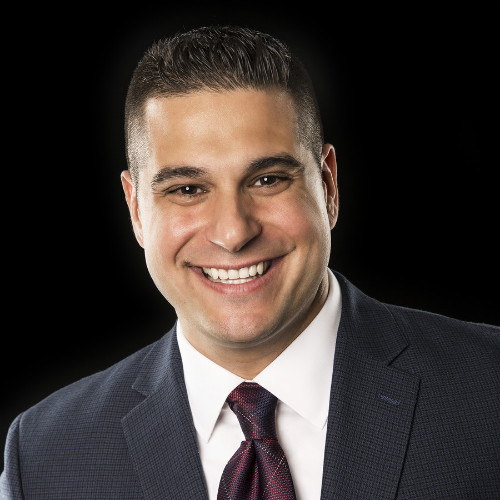
Vincent Pietrafesa

Ajay Gupta
Today's Guests
